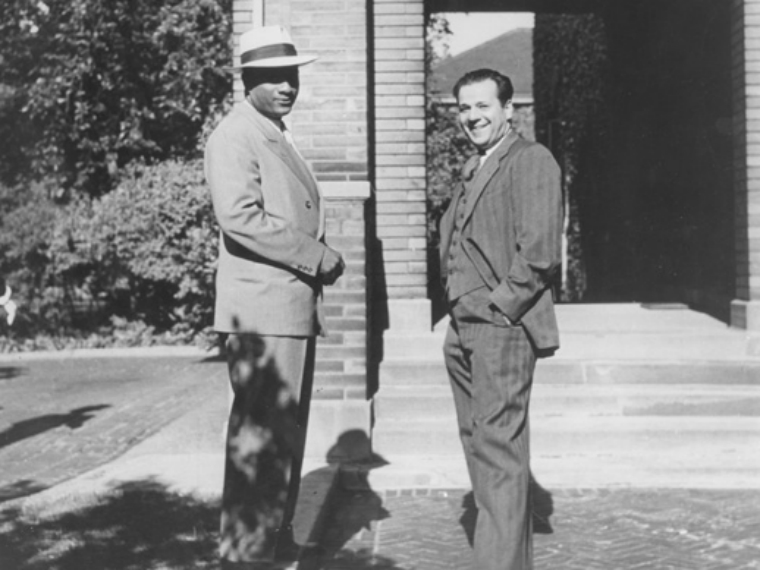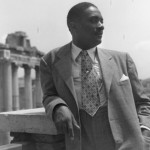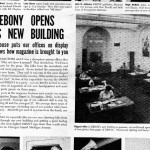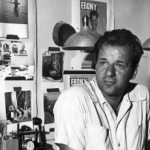This month Ebony celebrates its 70th anniversary. The pictorial news magazine was first published in November 1945 by Chicago-based Johnson Publishing Company. John H. Johnson created the magazine to share stories of African American life, with the goal of refuting stereotypes and inspiring readers to overcome racial barriers. Today's Throwback Thursday post takes a look at Ebony's Chicago history.
John H. Johnson worked with journalist Ben Burns to start Ebony. In 1942, Ben Burns worked in public relations for Earl Dickerson, a local black politician who was running for Congress against William Dawson. It was at this time that Burns met Johnson, a young political assistant who wanted to create a black equivalent of Life magazine. While Johnson raised money to fund the magazine, Burns worked on assembling the fledgling publication. The first issue was assembled on the Burns’ kitchen table in their apartment on Jackson Boulevard in Chicago. Burns was the executive editor of the magazine from 1945 to 1954.
Ebony first featured articles about notable African Americans such as celebrities and sports figures, and during the late 1950s ran Dr. Martin Luther King, Jr.’s column, “Advice for Living By.” The magazine occasionally presented works by well-established literary figures such as Langston Hughes and Gwendolyn Brooks. It also frequently published special issues, such as the 1963 100th year commemoration of the Emancipation Proclamation, that highlighted issues deemed particularly relevant to African Americans.
Read More About Ebony
Succeeding Against the Odds is the autobiography of John H. Johnson. He shares his story of how he parlayed a $500 loan into a publishing, cosmetics and insurance empire.
The Ebony Pictorial History of Black America contains five volumes, each sharing a chronological time span of African American history.
The Black Press by Todd Vogel consists of 13 individual essays that examine black journalism's contribution to African American life and mainstream American culture.
In Nitty Gritty, Ben Burns recounts his own story of being a white journalist working as an editor for African American publications in Chicago.
The Ebony Cookbook was first published in 1962 and has stood the test of time. It preserves many dishes that might otherwise be lost to a TV-dinner generation.








Add a comment to: #TBT: 70th Anniversary of Ebony Magazine